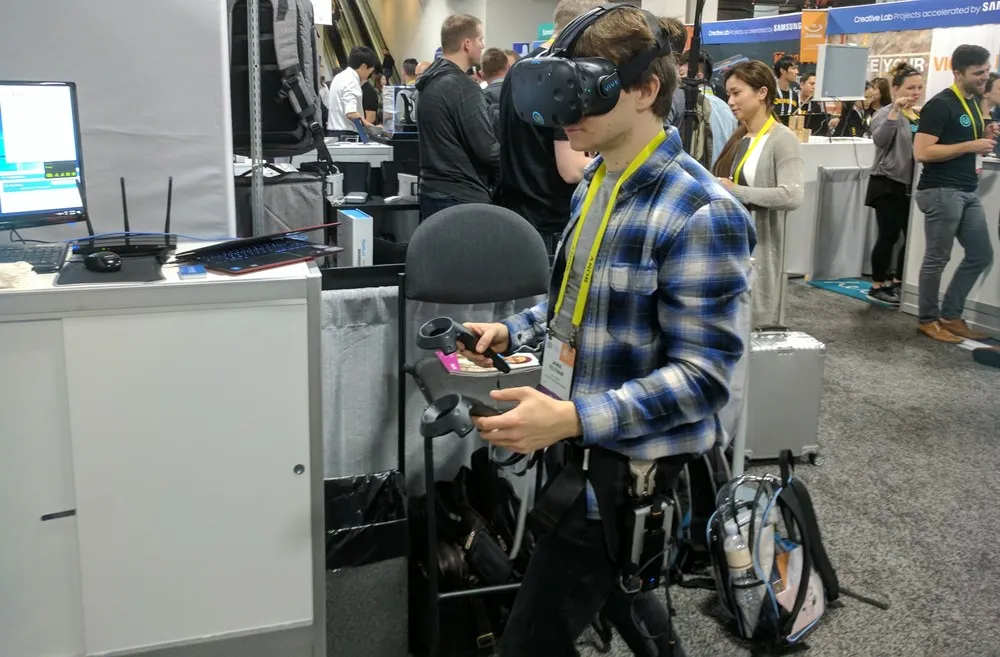Two years ago at CES we got our first look at the HTC Vive, and the Oculus Rift first went on sale.
CES is one of the world’s largest technology conferences and for decades the event has set expectations for the coming year. Last year, for example, we saw the reveal of the Vive Tracker alongside VR headsets powered by Microsoft’s tech — each of which hit the market just before 2017 ended. The event also offered demonstrations of Intel’s Project Alloy, which ultimately failed to impress manufacturers and was cancelled. This year I expect a similar mashup of next generation technologies, some of which will never actually make it to market.
There is still a long year ahead with events like GDC and E3 coming up where players like Facebook, Microsoft and HTC could unleash details about upcoming games and updates to their systems. At CES, though, the tech conference is likely to shine a light on areas that will be key to next generation VR systems — wireless, haptics and next generation displays.
Wireless VR

TPCAST introduced wireless VR to the HTC Vive last year, but in 2018 we are likely to see a whole series of manufacturers embrace the WiGig standard that could enable interoperable wireless transmission of tracking information and virtual worlds — cutting the cord to multiple headsets in the process.
When we spent extended time with TPCAST we noted it had a highly involved setup process and audio complications, each of which we hope to see improved upon with new wireless systems in 2018.
Is it possible that by the end of 2018 the vast majority of people who bought VR headsets like Rift and Vive will have upgraded their systems with wireless? I certainly think it is possible because the experience of high fidelity wireless VR is just too improved to pass up.
Haptics
Convincing your sense of touch that what you feel with your hands and skin is real remains one of the hardest unsolved problems to make VR more immersive.
A number of companies are working on a variety of solutions including vests that vibrate and gloves that pull back your fingers.
The days are numbered where our controllers merely vibrate as a coarse method of getting haptic feedback, but whether those days number in the hundreds of thousands isn’t certain. I’d wager it is the latter.
Next Generation Displays

Companies like Varjo and Kopin are working on display tech that could dramatically upgrade the resolution of VR headsets.
These updates, however, are held back by the cost of the graphics cards needed to render all those extra pixels. Could we see more modest upgrades, though, that increase the resolution of VR headsets but require costlier but still commercially available graphics cards?
I’d wager cost is the bigger impediment to VR adoption than resolution but we’ll nonetheless be looking for big updates on VR displays at CES.
For more about what’s being shown as CES, you can check out the official CES site.






























